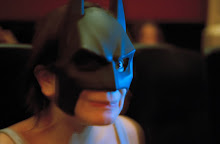 Fifteen years ago, Scott McCloud undertook the daunting task of explaining the medium known as "Comics." The result of his efforts was Understanding Comics: The Invisible Art.
Fifteen years ago, Scott McCloud undertook the daunting task of explaining the medium known as "Comics." The result of his efforts was Understanding Comics: The Invisible Art. What many view as a simple form of expression is actually far far from it. Branching from Will Eisner's original idea of comics as "sequential art," McCloud provides a definition of comics before further delving into every sensory and imaginative process that goes into a comic creation. I thought Understanding Comics would be easy to read through, as it is designed as a comic book itself (an easily accessible form)! However, I found myself enthralled by all the different theories McCloud presented, and it took me more than a few minutes to truly grasp what he is trying to convey. I read and studied each page thoroughly and was excited by the way McCloud is able to capture and explain the beauty and potential of comics. The way in which he breaks down and explains various techniques (such as different panel transitions) provided a number of insights into both reading and creating comics. I read The Spirit: Umbrella Handles after reading Understanding Comics and found myself analyzing the changes in action over panels, the dialogue, the use of icons. However, McCloud conveys his knowledge in a way that doesn't take the fun out of comics but rather enhances a reader's experience.
There are many terms McCloud defines in his book, the first and foremost being "comics" itself. The following are a list of important vocabulary and "comics language":
Comics (as defined by Scott McCloud): "Juxtaposed pictorial and other images in deliberate sequence, intended to convey information and/or to produce an aesthetic response in the viewer."
Splash page: a full page drawing, often including the title and credits as the first page of a comic book
Thought balloon: internal character dialogue, usually represented in a bubble
Narrative box: narrative boxes are used to convey information not easily understood through thought or speech bubbles and drawings
panel: bordered images, each usually representing a different subject, scene or action; often aligned in a grid format
closure: the mental process that allows readers to imaginatively fill in the spaces in between the panels
gutter: the spaces in between the panels which serve just as important a role as the panels themselves

1 comment:
Perfect summary!
Post a Comment